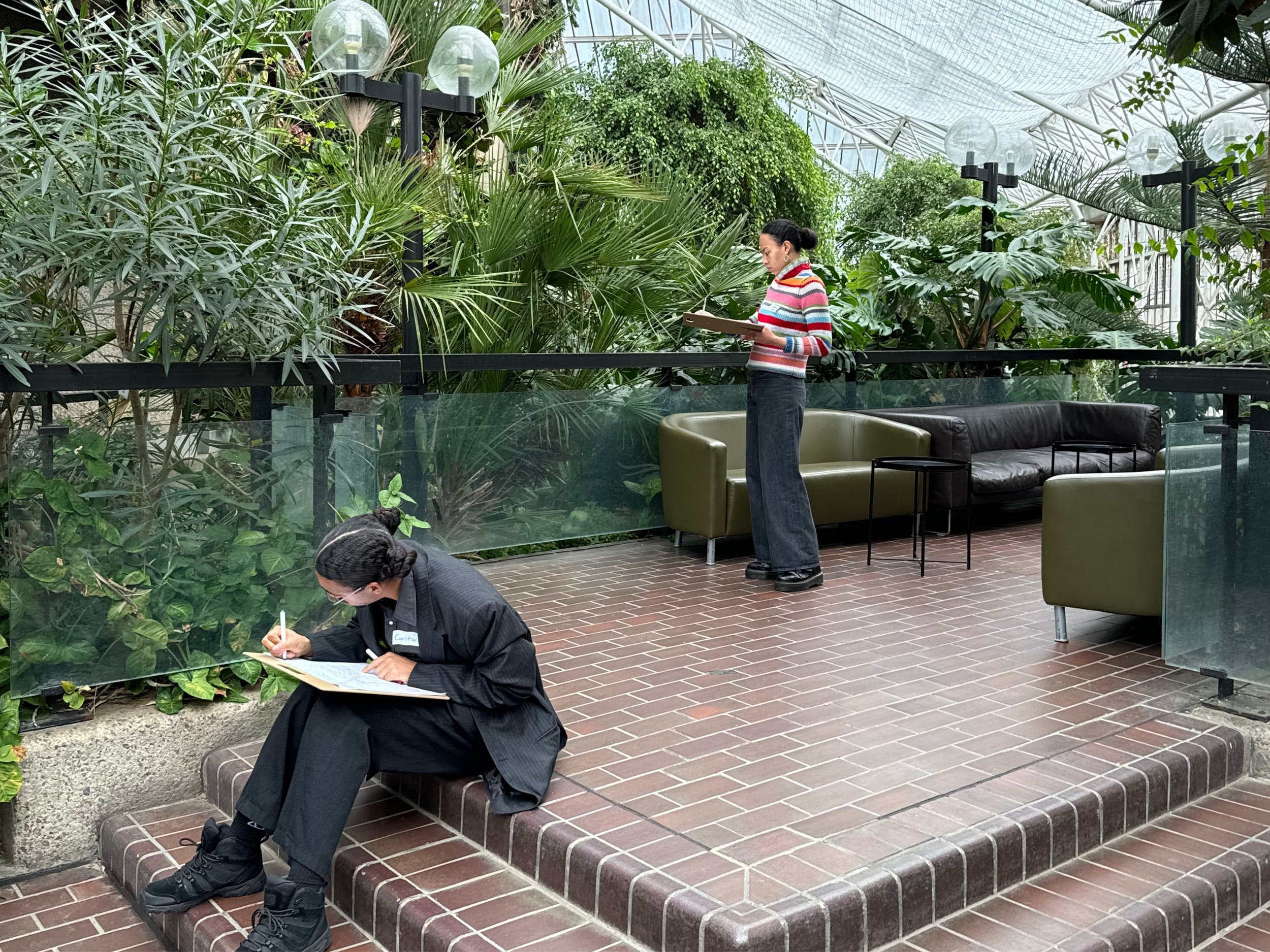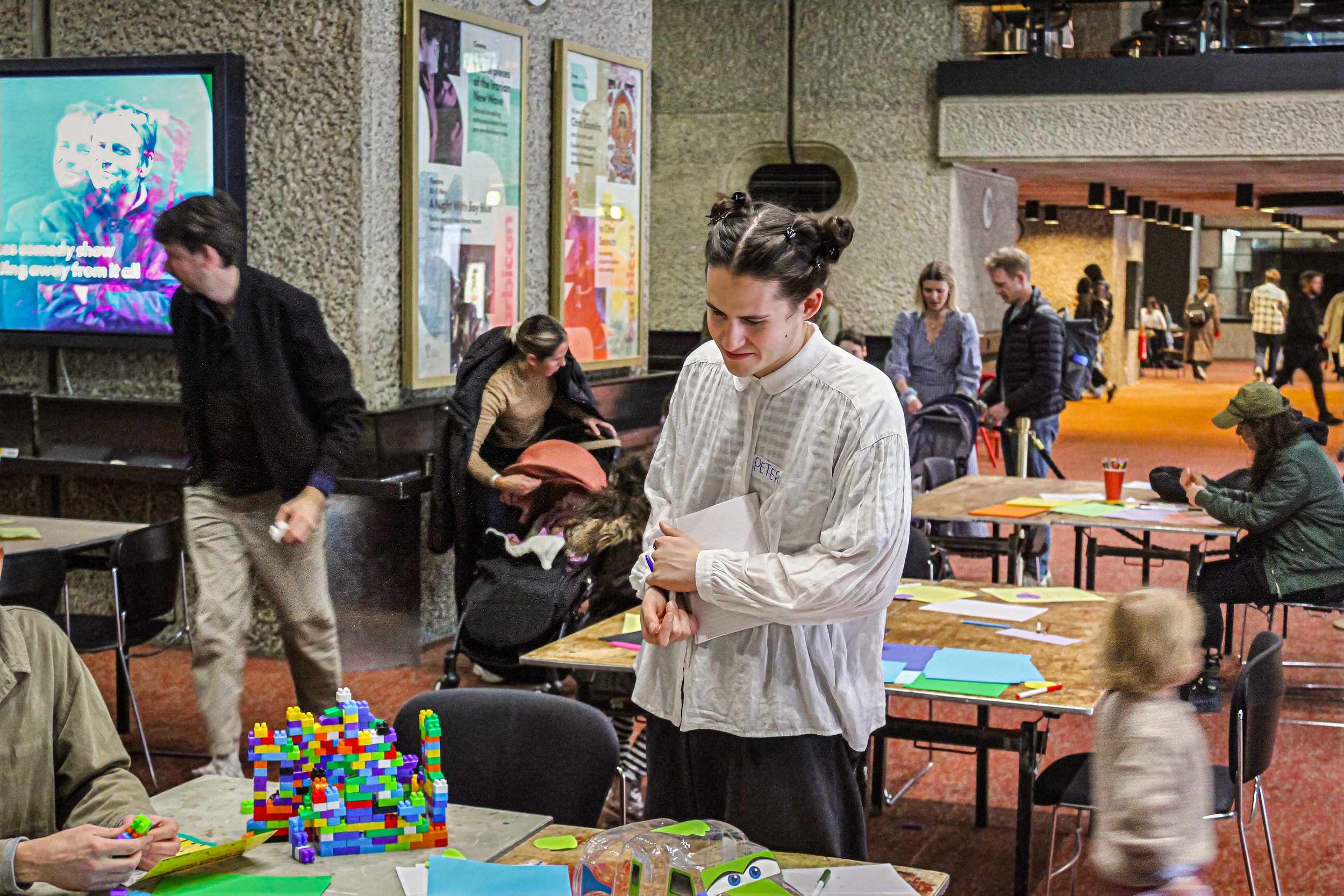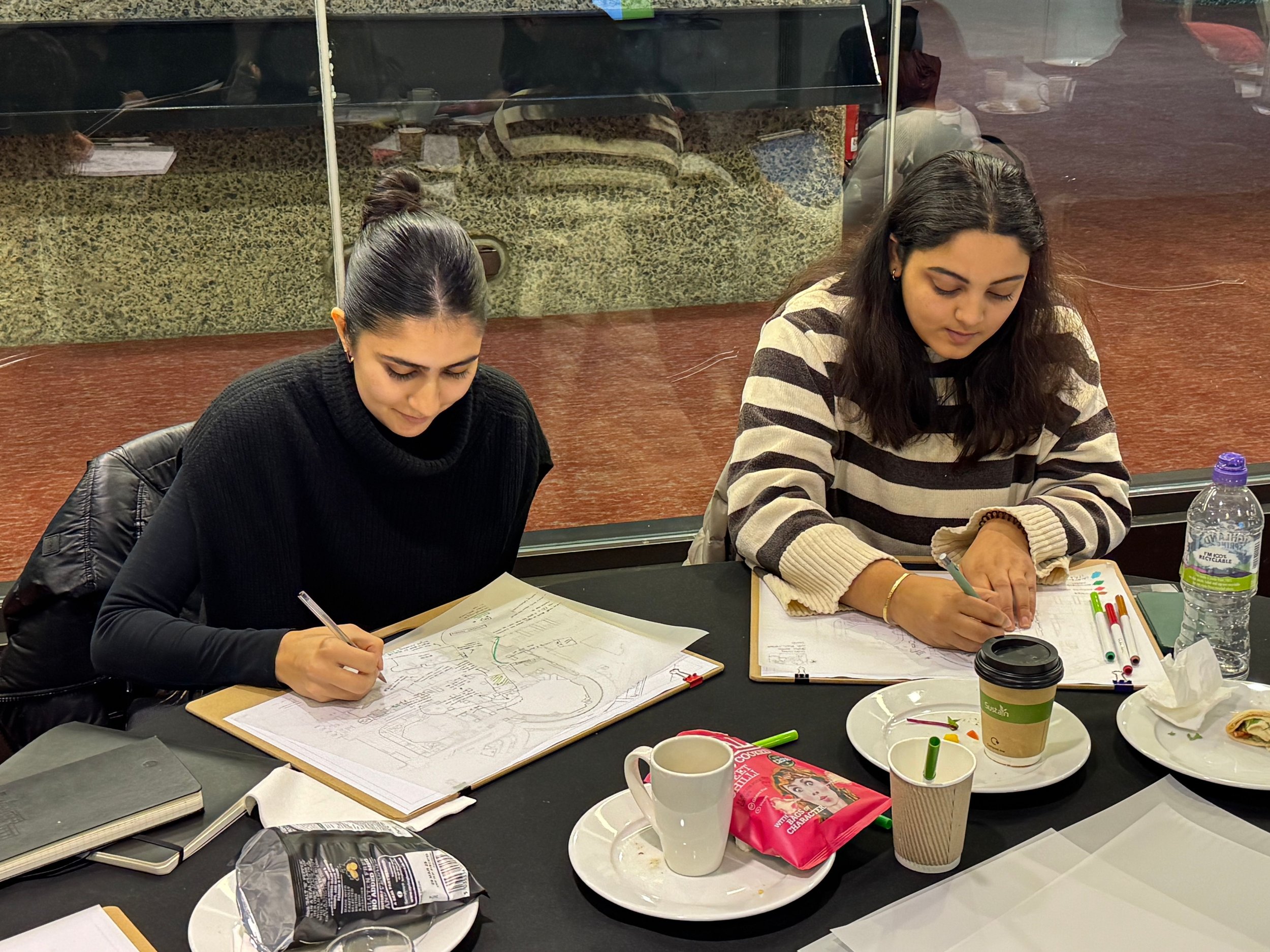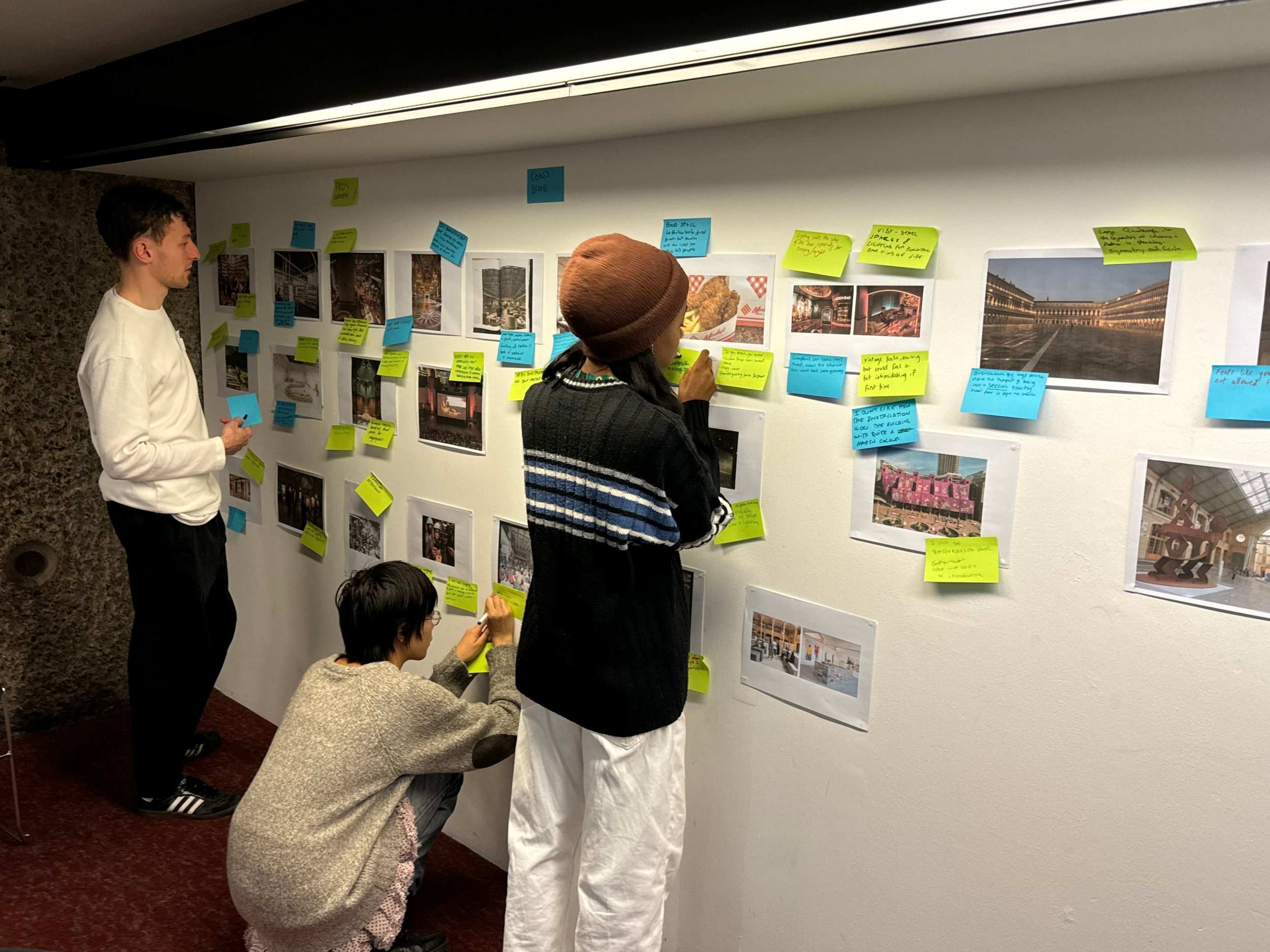
Barbican Renewal
Co-design Program
Project
Barbican Renewal Co-design Program
Team
Barbican Centre, Allies and Morrison, Akif Khan Architects, Beyond the Box CIC
Location
Central London - City of London
Beyond the Box were commissioned to lead the co-design process as part of the Barbican Centre’s Renewal Programme. Working in partnership with the Barbican Centre, Allies and Morrison, and Akif Khan Architects, our role was to ensure meaningful collaborative design with young people aged 18–30, embedding their perspectives into the future vision of this iconic cultural space.
We designed an engagement strategy that created space for collaboration and dialogue with young people, ensuring their voices were integral to shaping the project. A dual programme was developed, focusing on key aspects of Phase 1 of the renewal, the Conservatory and the Lakeside, and Foyer spaces.
Barbican Renewal is the Barbican’s plan to ensure every part of the Barbican Centre’s iconic site is restored, revitalised and relevant for future generations.
The Barbican is a Grade II listed Brutalist icon, recognised as one of the UK’s architectural treasures. Since it opened it’s doors in 1982, they have become a world-renowned destination, offering a creative programme of unique breadth in spaces of exceptional architectural significance.
At the heart of Renewal is a commitment to celebrating the architectural vision and heritage of the Centre, with a programme of sensitive conservation and upgrade to bring the buildings back to their best, while also delivering a place that is truly inclusive, sustainable and resilient.
Barbican Renewal Co-Design Program
Over a period of six months, we worked closely with 24 participants, guiding them through a creative exploration of RIBA Stages 2–3. This process included:
Immersive workshops and site visits
Hands-on co-design sessions
Interactive mapping and visual storytelling exercises
Digital and physical prototyping
By fostering collaboration and amplifying young voices, our work helped to reimagine the Barbican’s public spaces with inclusivity, accessibility, and creativity at the forefront. The insights gathered from this programme will directly inform the next stages of the Renewal Programme, ensuring that the Barbican remains a welcoming and dynamic environment for future generations
Testing & Implementation
To ensure the relevance and feasibility of our co-design outcomes, we tested our findings during the Barbican’s Family Adventure Day. This provided an opportunity to gather real-time feedback from a diverse audience, including families and children, helping us refine and validate ideas before moving forward. By observing how different user groups engaged with our proposals, we gained valuable insights that shaped the final recommendations.
By fostering collaboration and amplifying emerging voices, our work helped to reimagine the Barbican’s public spaces with inclusivity, accessibility, and creativity at the forefront. The insights gathered from this programme will directly inform the next stages of the Renewal Programme, ensuring that the Barbican remains a welcoming and dynamic environment for future generations.
“Incredible opportunity both personally and professionally, really enjoyed working with Beyond the Box and the Barbican team. The attention to inclusivity and participation felt inviting and made it easier to share ideas and be collaborative”.
— Carlton, Co-design Participant
Sharing the Process at the Festival of the Future
Following the completion of the co-design programme, we shared our approach and findings as part of the Festival of the Future at the Royal Institute of British Architects (RIBA). This event provided a vital platform to showcase the impact of our work and to invite more young people to engage with the ongoing renewal of the Barbican Centre.
Our event highlighted the innovative engagement methods used in the programme, demonstrating how young voices were integrated into the project’s vision. Through interactive discussions over modal making and visual displays, we showcased the participants' ideas and contributions, bringing their insights to a wider audience. Attendees, including students, emerging designers, and built environment professionals, had the opportunity to engage directly with the co-design process and explore ways to get involved in future stages of the project whilst talking to the co-design focus group.
By positioning this work within the broader conversation on urban renewal and public space design, we underscored the value of inclusive, community-led approaches. The event not only helped extend the reach of the project but also inspired more young people to see themselves as active participants in shaping the built environment.
















